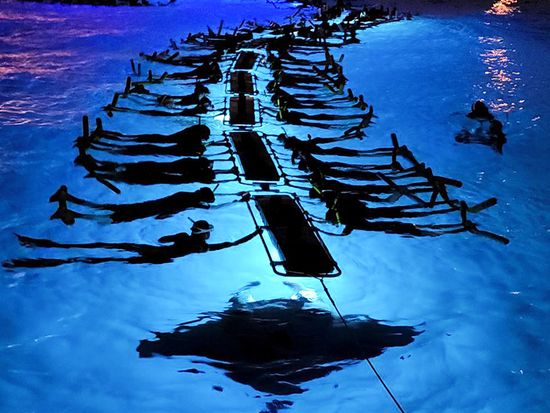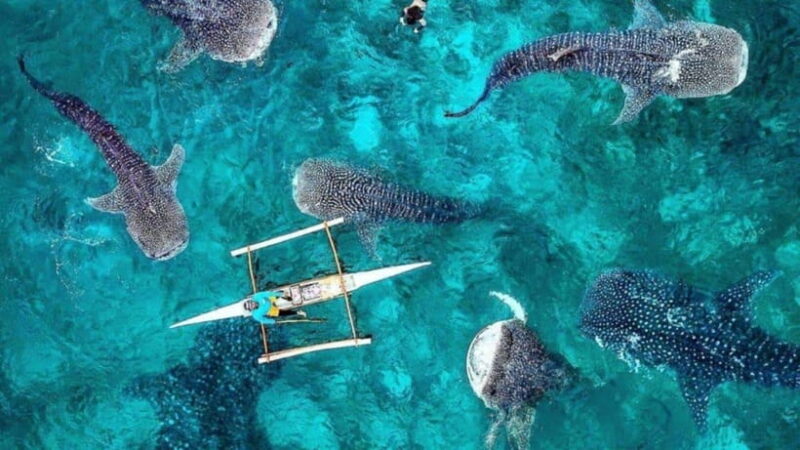Dive In: Sustainable Sea Adventures That Make a Difference

Imagine a world where your travels directly contribute to preserving our oceans and uplifting local communities. That world is within reach. Responsible marine tourism is not just a trend; it's a necessity for safeguarding our planet's precious underwater ecosystems and supporting the people who call these coastal areas home. Join us as we explore unique and sustainable sea adventures, moving beyond generic descriptions to offer concrete examples and actionable advice. Let's embark on a journey of purpose, where your wanderlust fuels conservation and community growth.
Ethical Whale Shark Encounters in Donsol, Philippines
The Philippines is one of the few places you can swim with these gentle giants. The town of Donsol offers a remarkable example of how ethical tourism can transform a community. Sustainable travel Donsol Philippines Whale Sharks has directly improved life for residents. Tourism dollars from these encounters have been strategically allocated to local schools, resulting in better educational resources for children. A recent project saw the implementation of a new water filtration system for Barangay Dancalan, providing clean and safe drinking water for families. Medical facilities have also benefited, enhancing healthcare access for the community.
When participating in whale shark conservation Philippines, it's essential to adhere to strict guidelines. Maintain a minimum distance of 4 meters from the whale sharks, and absolutely avoid using flash photography, which can distress these sensitive creatures. Instead of using distracting flash, focus on capturing the awe of swimming with these giants using natural light.
Capturing Ethical Whale Shark Images
Photography can be a powerful tool for conservation. When photographing whale sharks, opt for wide-angle shots that showcase their impressive size and their natural environment. Aim to capture their natural behavior – feeding, swimming, and interacting with other marine life – without interfering with their activities. By choosing ethical photography techniques, you can create images that inspire awe and respect for these magnificent animals, furthering conservation efforts.
Before booking your adventure, research tour operators who demonstrably contribute to local community development and conservation efforts. Look for companies that partner with organizations like WWF Philippines (https://www.worldwildlife.org/), which monitors sustainable practices in the area and ensures that tourism benefits both the whale sharks and the local population. Support the local economy by buying goods and services.
Photographing Bioluminescent Plankton in the Maldives
Imagine witnessing a sea of stars beneath your feet. This magical phenomenon occurs on Vaadhoo Island in the Maldives, where bioluminescent plankton light up the shoreline. From November to April, especially during new moon phases when the night sky is darkest, the island transforms into a mesmerizing display of natural light.
To capture this incredible spectacle while minimizing your impact, it's important to choose the right equipment and techniques. The Olympus TG-6 is an excellent choice for underwater photography due to its ruggedness and macro mode, allowing you to capture the individual plankton cells. Using a red light filter can also aid in focusing without disturbing the bioluminescence. Best camera for underwater photography manta rays has a lot to do with these settings.
Techniques for Capturing Bioluminescence
Photographing bioluminescent plankton requires a specific approach. Use slow shutter speeds (2-5 seconds), high ISO (3200-6400), and a wide aperture (f/2.8) to maximize light capture. Equally important is minimizing light pollution. Turn off any unnecessary lights and allow your eyes to adjust to the darkness.

Remember that these plankton are fragile and important to the local ecosystem. Avoid disturbing them or walking unnecessarily on the beach, which can damage their habitat. Every step you take to protect this environment ensures that future generations can witness its magic.
Documenting Antarctic Wildlife on a Cruise to the Weddell Sea
Embark on an unforgettable journey to the Weddell Sea in Antarctica, where you can document the region's unique wildlife while respecting its fragile environment and supporting scientific research. The challenges of photographing in such extreme conditions are significant, but the rewards are immeasurable.
Extreme cold can significantly impact battery life. Carry extra batteries and keep them warm inside your clothing. Lens fogging is another common issue; use silica gel packs to absorb moisture and allow your equipment to gradually acclimate to the temperature. A Sony a7S III camera would be a good start for photographing wildlife in such extreme conditions.
Ethical Wildlife Photography in Antarctica
When photographing emperor penguins, seals, and tabular icebergs, focus on composition and storytelling. The long days and golden light of the Antarctic summer offer incredible opportunities for stunning imagery. Remember to respect the wildlife by maintaining a safe distance, adhering to the Antarctic Treaty guidelines, and avoiding disturbance of breeding colonies.
Choose cruise operators that actively support scientific research and conservation efforts in Antarctica, such as those affiliated with the Antarctic Research Trust (https://www.antarctic-research.de/). By supporting these companies, you're directly contributing to the preservation of this extraordinary environment. Documenting photographing tabular icebergs Weddell Sea cruise provides the opportunity to contribute to ongoing science.
General Sustainability Tips for Sea Adventures
Regardless of your destination, embracing sustainable practices is crucial for protecting our oceans.
- Reef-Safe Sunscreen: Protect coral reefs by using reef-safe sunscreen like Stream2Sea (https://stream2sea.com/). Its zinc oxide formulation shields your skin without harming delicate marine ecosystems.
- Minimize Plastic Use: Reduce plastic waste by bringing reusable water bottles, shopping bags, and food containers.
- Support Local Businesses: Patronize local businesses that prioritize sustainability, purchasing souvenirs and services that benefit the community and the environment.
Join the Movement: Sustainable Seas and Underwater Smiles
We invite all underwater photographers to submit their photos and videos showcasing sustainable sea adventures using the hashtags #SustainableSeas and #UnderwaterSmiles. The Ocean Art Underwater Photo Competition (https://www.uwphotographyguide.com/ocean-art-underwater-photo-competition) recognizes and celebrates images that promote ocean conservation, and we encourage you to participate.
Conclusion
Choosing sustainable sea adventures is a powerful way to protect our oceans, uplift local communities, and create lasting positive change. By embracing responsible travel practices and supporting organizations dedicated to conservation, you can make a tangible difference. Visit vistalocation.com for more information and booking options, and let's work together to ensure a healthy and vibrant future for our planet's oceans.